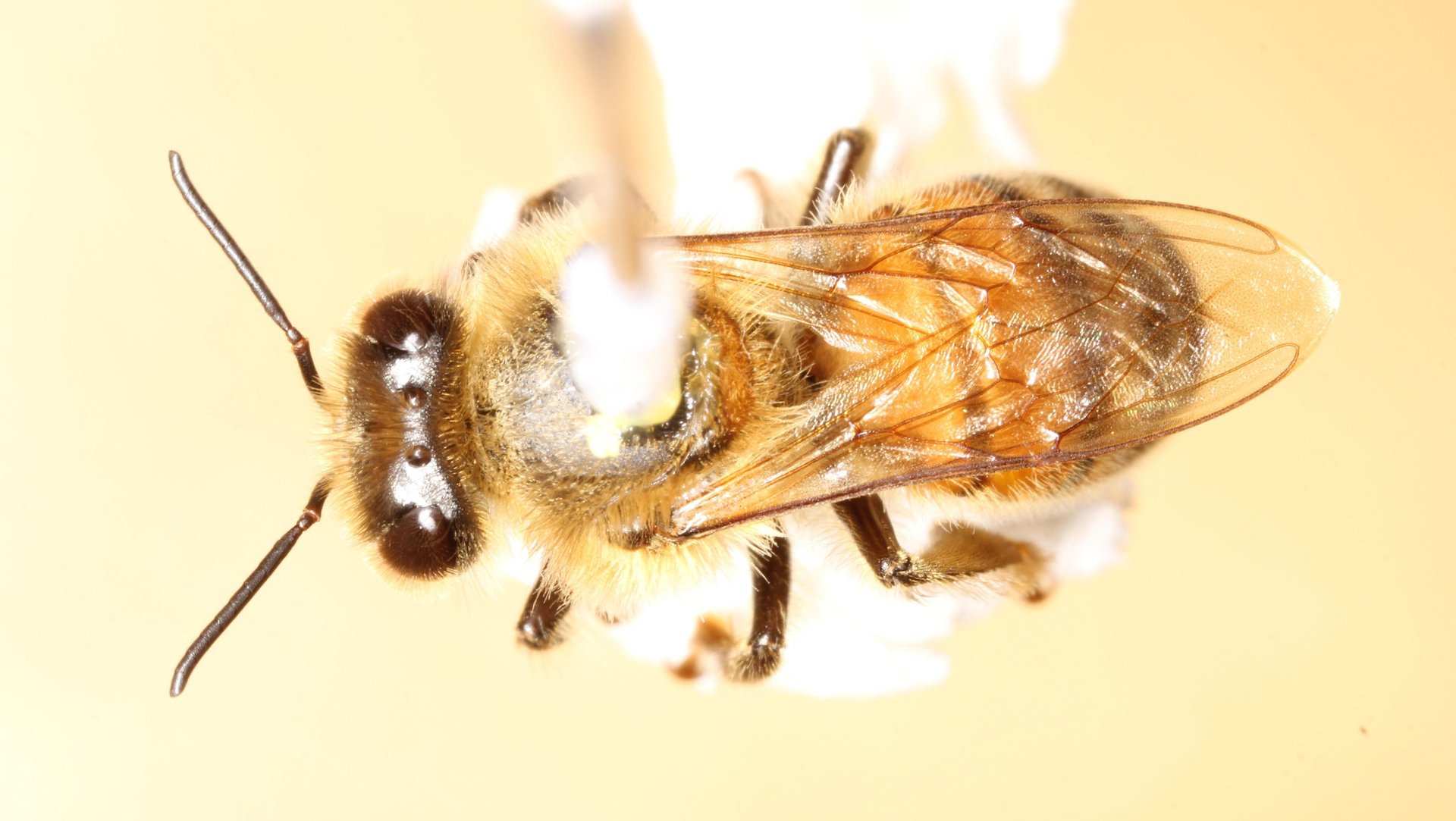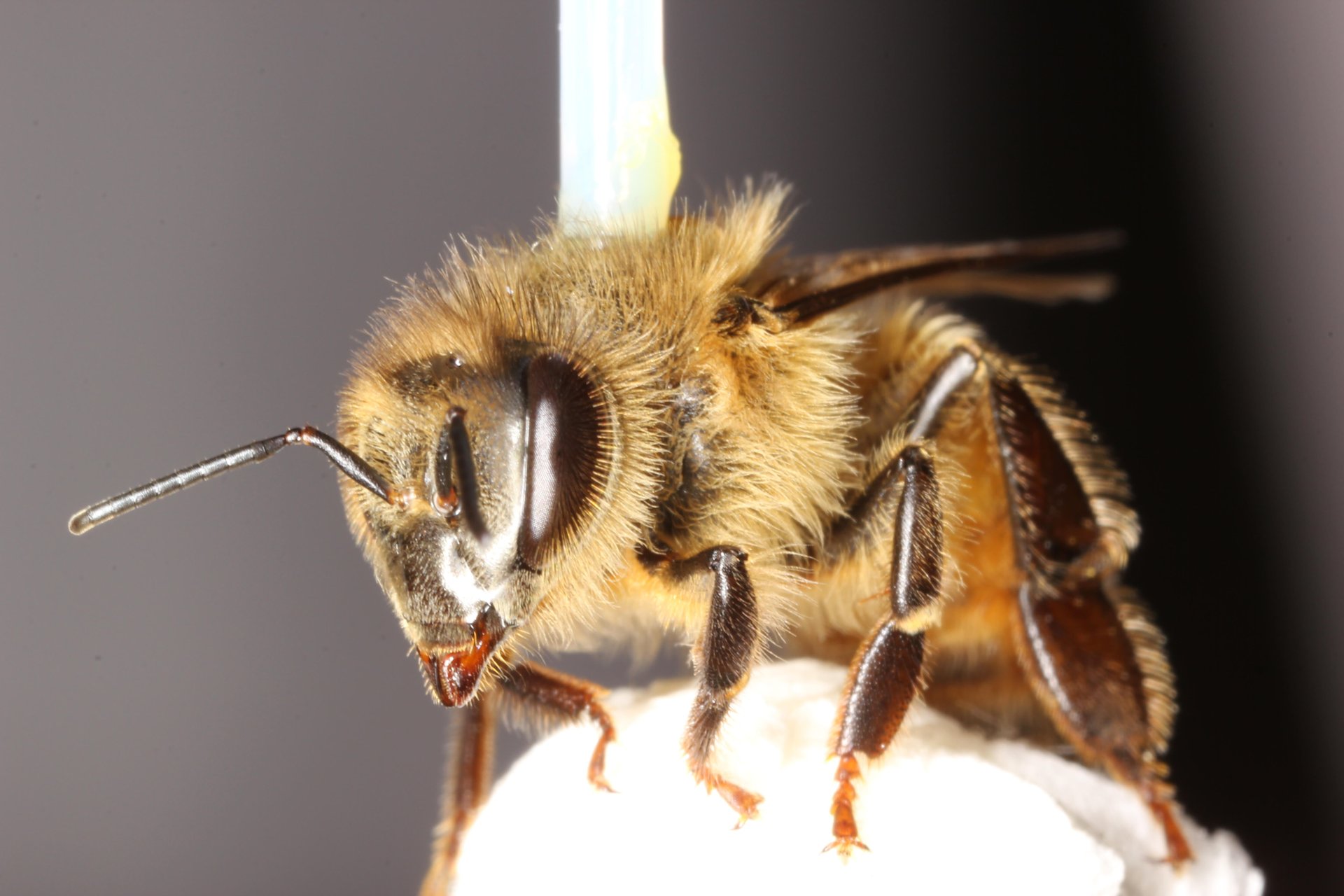The flight of the honey bee is considerably messed up thanks to a common pesticide
A key to the epidemic of honey bee colony collapse may be an agricultural pesticide that impairs bees’ ability to fly, according to a paper published Wednesday (April 26) in the journal Scientific Reports.


A key to the epidemic of honey bee colony collapse may be an agricultural pesticide that impairs bees’ ability to fly, according to a paper published Wednesday (April 26) in the journal Scientific Reports.
Biologists at the University of California San Diego attached harnesses to the backs of honey bees and flew them in circles in a specially designed contraption resembling an amusement park swing ride, except for bees. A sensor attached to the swing could detect slight changes in speed as the bees flew, at their own pace and for as long as they could, both before and after being exposed to doses of the neonicotinoid thiamethoxam at amounts akin to what they might encounter in a crop field.
The differences were stark: Within an hour of exposure, the bees entered what the researchers called an “excited” state, suddenly able to fly dramatically longer distances and for longer periods of time.
This might help explain the phenomena documented in other studies of honeybees leaving their hives to forage and then not returning, said James Nieh, a professor at UC San Diego and an on the paper. “Bees that fly more erratically for greater distances may decrease their probability of returning home.” (Other scientists have suggested that the pesticides actually alter bees’ ability to retrieve navigation memories.)
But after being exposed for one or two days, the bees’ ability to fly dropped. Their speed reduced, as did their endurance; they flew for a 54% shorter length of time, and traveled a 56% shorter distance.
And bees that can’t fly well can’t feed themselves, “because that’s the only way they can collect food,” said Simone Tosi, a UC San Diego biology researcher and another author on the paper. “Their flight ability is also crucial to guarantee crop and wild plant pollination.”

Thiamethoxam, one of the most commonly-used chemicals in the neonicotinoid class of pesticides, is sold under the product names Helix Xtra and Cruiser, made by agrochemical firm Syngenta. The European Union is contemplating a total ban of neonicotinoids, as is Canada.
The US Environmental Protection Agency is nearing the end of the multi-year process to develop regulations for thiamethoxam and four other neonicotinoid pesticides. While it is not clear what the scope of those new rules will be, at least one related to bees is already off the table: In January, at the tail end of the Obama administration, the EPA decided to issue voluntary guidelines for growers who use the chemicals during times when bees are pollinating and most vulnerable to exposure, rather than issue mandatory restrictions on their use.
That decision was issued at the same day as a federal report concluded that thiamethoxam can kill bees and their larvae individually, but in “most approved uses” they “do not pose significant risks to bee colonies.”
Environmental advocates were dismayed.
“It’s outrageous that on the same day the EPA acknowledged these dangerous pesticides are killing bees it also reversed course on mandating restrictions on their use,” Lori Ann Burd, the director of the Center for Biological Diversity’s Environmental Health program, said at the time. “This is like a doctor diagnosing your illness but then deciding to withhold the medicine you need to cure it.”
The EPA’s move came the same week the US Fish & Wildlife Service decided to add a common bumblebee to the Endangered Species List, the first bee to ever be listed. Nearly 90% of the population of rusty-patched bumblebees, once common in 28 states, has disappeared since the early 1990s.